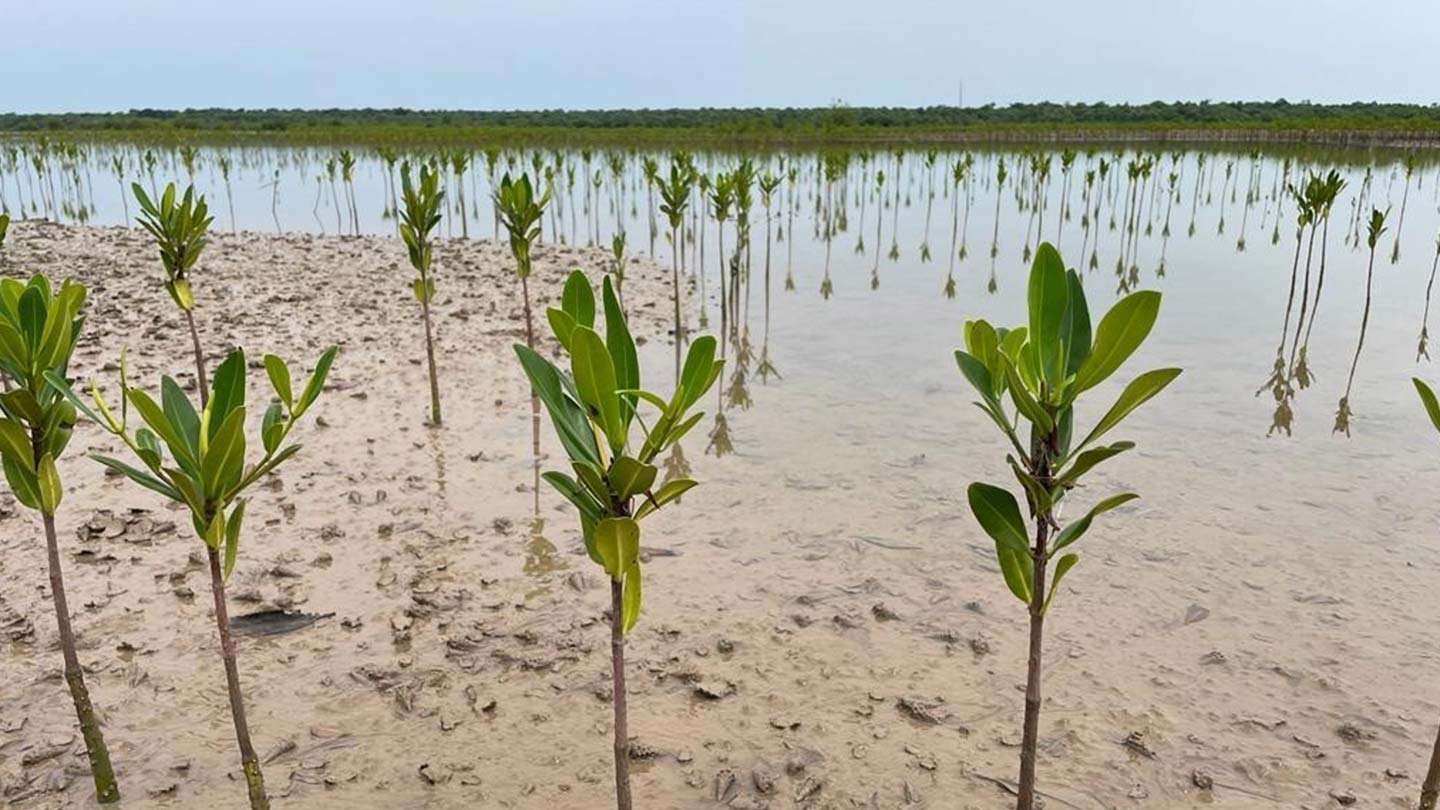Our approach to nature-based climate solutions in The Gambia
07.02.24
Peter Kofod Kristensen, Director, Bioenergy Sustainability
07.02.24
Peter Kofod Kristensen, Director, Bioenergy Sustainability
When it comes to mitigating climate change, there are two basic options. The first – and top priority – is to reduce the emissions that humans produce through our activities, and the other is to develop solutions that remove carbon dioxide from the atmosphere and store it.
Ørsted was the first energy company with a science-based net-zero target, with emission reductions at its core. Since 2006, we’ve reduced the emissions intensity of our energy generation (scopes 1-2) by 92 % and since 2018, we’ve reduced our value chain emissions (scope 3) by 81 %. We aim to reduce the emissions intensity across our full value chain (scopes 1-3 excluding gas sales) by 99 % from 2018 levels by 2040.
While emission reductions are our priority, we also recognise the importance of supporting climate action beyond our value chain. That’s why we finance and develop nature-based carbon removal projects as a contribution to the global net-zero emissions goal. Nature-based carbon removal projects leverage the inherent capacity of the natural world – soil, plants, and trees – to use and store carbon dioxide.
One example of our work is mangrove restoration in The Gambia.

Mangrove forests are among the most carbon-dense ecosystems in the world – they absorb carbon from the atmosphere and store it in their leaves, branches, and trunks, resulting in increased carbon storage in the soil. Mangroves also sustain rich biodiversity and prevent soil erosion.
In parts of The Gambia, a combination of obstructed water flows and drought in the 1990s killed off substantial mangrove populations. Changes in the soil composition and water flows meant that the mangroves couldn't return unaided.
The mudflats that were left behind can’t be used by local villages. What’s more, mangroves are an important breeding ground for fish and small marine species at the bottom of the food chain. The disappearance of the mangroves has led to a decrease in fish populations, depriving villagers of a food and capital resource.
In light of this situation, Ørsted initiated a project to restore mangrove populations in The Gambia, in partnership with the Gambia Department of Parks & Wildlife Management and three local NGOs.
For Ørsted, this was an opportunity to support the restoration of a carbon super-storer and make a contribution to global climate action outside our value chain. But the project had to make sense not just for global climate action, but also for the local communities in The Gambia and for biodiversity in the region.

We worked towards these objectives with a two-step approach. First, through the local consortium, we financed the mangrove propagules (seedlings) and provided guidance for the villagers on how to plant them. We also conducted stakeholder consultations, ensuring the consent and support of the local communities. On an agreed day, villagers participated in the planting of new mangroves on their land and received a fair salary for their effort.
In 2022, this collaboration succeeded in planting 240 hectares of mangroves as a pilot project. In 2023, the project ran at full scale: More than 10,000 people from 63 communities along the Gambia River together planted 40 million trees across approximately 5,000 hectares of land – equivalent to 5,000 soccer fields. In 2024, we aim to plant the same amount again.
The second step is to provide a financial benefit to the communities over the 30-year lifespan of the project. Every 1-3 years, Ørsted uses drones to monitor the growth of the mangroves. The growth means that a certain amount of carbon has been sequestered and stored. We enter this data into a system managed by Verra, an independent certification scheme, to generate a carbon credit, and we then purchase this credit from the consortium, with 60 % of the money going to the local communities. The communities then decide how to allocate this money: to education, healthcare, sanitation, or other priorities. The remaining 40 % goes to the participating NGOs and the Gambia Department of Parks & Wildlife Management, who use the money for activities related to education and mangrove protection.

The more the mangroves grow, the more carbon is stored and the more money the communities receive. It’s a long-term win-win for climate, nature, and people. In addition, as the fish and oysters return, the communities can use them not only as a food source but also to sell on the local markets, generating additional income.
If carbon credits are to make a valid contribution to climate action, they must meet two criteria: additionality (for example, the project wouldn't have happened without the financial support), and permanence (for example, the new vegetation won’t be destroyed by grazing at a later date).
We engaged with our project in The Gambia from the beginning and remain engaged throughout, so that we can do our utmost to ensure that these criteria are met. In practice, this means that we allocate a small team to the project in addition to our financial commitment.
This is a resource-intensive approach, and the delivery of carbon credits may take some time because the mangroves must grow to a certain size. However, we believe this is the right thing to do: It means that we can actually see that the mangroves have been planted, are growing, aren't being destroyed, and wouldn't have grown without our support. Engaging in this way also means that we can take a holistic approach, ensuring that carbon credit generation doesn't come at the expense of nature or local communities.
We take the same approach in other countries and with other projects, as we continue to work for high-quality, nature-based climate solutions around the world. It’s another aspect of our effort to build green energy the right way.